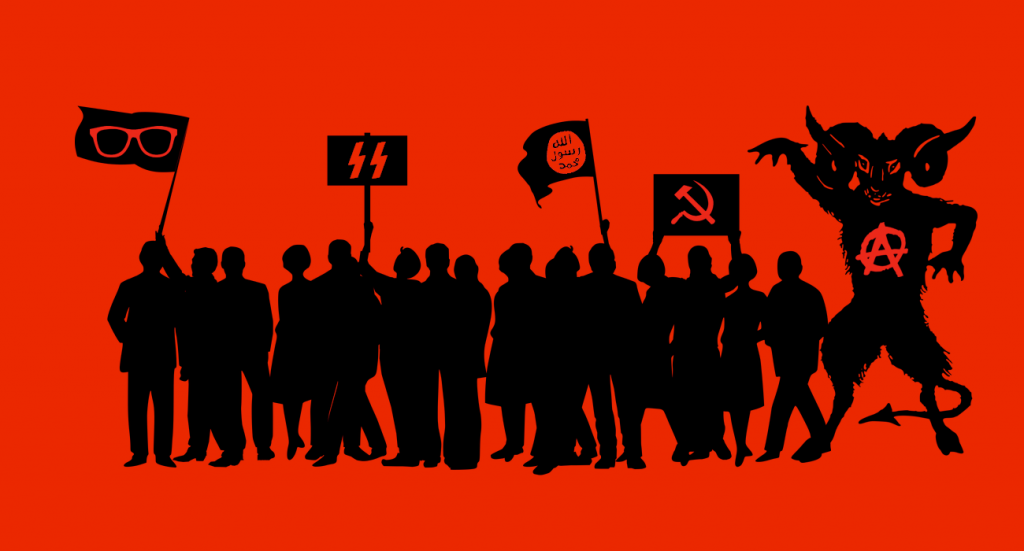The https://english.atlatszo.hu use cookies to track and profile customers such as action tags and pixel tracking on our website to assist our marketing. On our website we use technical, analytical, marketing and preference cookies. These are necessary for our site to work properly and to give us inforamation about how our site is used. See Cookies Policy
Data visualization: the definitive timeline of anti-Soros conspiracy theories
Hungarian-born philanthropist and billionaire George Soros has been a protagonist of conspiracy theories for a long time. He has been branded as a villain and blamed for various troubles all over the world, including in Hungary where Soros is currently the favorite scapegoat used by the Orban government. We collected the conspiracy theories from the past couple of decades and put them on a timeline to show you how Soros was blamed by politicians in order to get away with undemocratic decisions.
It was recently revealed that the late Republican spin-doctor Arthur J. Finkelstein and his colleague George Birnbaum were the masterminds behind creating the ‘perfect enemy’ for authoritarian regimes. This enemy is George Soros, who, according to the conspiracy theorists, is always meddling, manipulating and pushing his agenda against the rule of sovereign governments.
Without wanting to lessen the ‘genius’ of Finkelstein and Birnbaum, we need to point out that this image of Soros has been around a lot longer than the recent infamous billboards of the Hungarian government, showing Soros in black and white, laughing, with large white letters saying ‘We shall not let Soros laugh in the end’.
Hungarian government spent €8.1 million on its latest ‘Stop Soros’ campaign
The Hungarian government keeps spending huge amounts of taxpayer money on anti-Soros propaganda. Just in two months – in December 2017 and January 2018 – the Orban government spent €13.5 million on six different advertising campaigns.
In the last thirty years, governments and politicians rose and fell. No matter whether they were left or right, liberal or conservative, in their pursuit of power one name always came up: that of George Soros.
The list of those who suggested that Soros is influencing politics in their countries is impressive: in Hungary, it started with racist writer-turned-politician István Csurka, but then Soros was blamed for troubles by Eastern-European politicians such as Franjo Tudjman, Vladimir Meciar, Ján Slota, or Georghe Funar. More recently Soros has been used as a scapegoat by Hungarian PM Viktor Orbán, Russian president Vladimir Putin and U.S. president Donald Trump as well.
The attacks on Soros can be divided into two phases: one starting from the early 90s, lingering around until the end of the decade, mainly in Center- and Eastern-European counties. The second wave started at around 2014, and is still around and appears on a global scale.
Origins of the Soros conspiracy theories
After the democratic transition of 1989 anti-Semitism surfaced in Hungary once again. The deputy chairman of the first governing party, István Csurka, initiated the conversation about Jewish people after the regime change. Csurka argued that he simply wants to stop communists from taking power again. He said that ‘as a result of history’ people with Jewish background are more likely to be in higher positions but can never ‘really be Hungarian’.
While Csurka was out of the MDF by 1993, newspapers about revisionist history, and writings about alleged Jewish power grab were published. MIÉP, a far-right party whose narrative has partly been organized around anti-Semitic messages, got into the parliament in 1998.
Around that time people like Csurka realized that openly anti-Semitic messages are unfavorable and alienating, especially in European politics, so they quickly moved to create a kind of anti-Semitism without actually mentioning Jewish people. This is a language based on literal codes, which can’t be accused of being anti-Semitic, while the target audience can decode the underlying message.
This messaging then appeared in all sorts of conversations regarding nationalism and patriotism. It was about ‘keeping Hungary for the Hungarians’, and not letting any ‘foreign powers’ interfere in the country’s decisions.
With neither the MDF, nor Jobbik or Fidesz willing to address the issue of anti-Semitism in Hungary, the myth of a wealthy, unknown evil, always about to attack the nation remained and became part of the narrative. This kind of messaging can be found in the campaigns against George Soros in the entire region.
It is important to note that this messaging works only because Hungarian society itself is not anti-Semitic, but a huge percentage of them believe that there is a global Jewish conspiracy.
A research done by Political Capital showed that about a third of the population is anti-Semitic, but more on a personal aversion level – it is not active hate. Mostly independent from age, education, or connection with Jewish individuals, people tend to believe in the cultural and societal stereotypes that come from the politics and the media. People with anti-Semitic tendencies are more akin to thinking about Jewish people as a group that doesn not want the best for the country. Also, Jewish people being different from them frightens them. Anti-Semitism in Hungary is based on an ideological basis, not on actual experiences or hate.
Almost all nationalist, authoritarian governments in the region argued at some point that Soros is trying to manipulate domestic politics in their countries.
The following timeline is not complete by any means, but it summarizes the most important conspiracy theories about Soros and who used them:
Written and created by Attila Bátorfy and Márk Tremmel
English version by Márk Tremmel. You can read the original, Hungarian language story here.
Cover image: Attila Bátorfy

